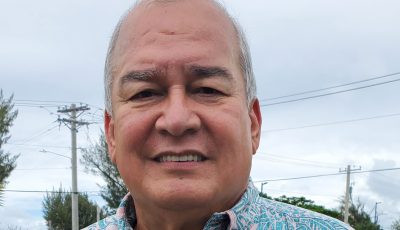Land cover project helps understand human impact on NMI environment
A land cover change project on Saipan that may help evaluate how human induced activities affect environmental and water quality was completed this year, according to the Water and Environmental Research Institute of the Western Pacific University of Guam.
Led by Yuming Wen, one of the main objectives of the project was to apply satellite imagery to drive land cover information to determine land cover change from the late 1970s to late 2000s, or more recent data depending on availability, according to WERI.
This would cover a period of about three decades.
Another objective is to georeference (to associate something with locations in physical space) or georectify the images (a number of corresponding control points, such as street intersections, are marked on both the image and the map), among other things, according to WERI.
Land cover information would be classified using satellites or aerial photographs.
The project helps determine land cover changes, and provide land cover and land cover change detection data and maps.
According to WERI, with current technology it is possible to monitor land cover change and determine impacts of human activities on environment and ecosystems on island.
“Considering the global warming, sea level rise and human induced activities, many island nations or regions are facing serious problems with environmental sustainability, water resources and water quality,” WERI stated.
It is important to determine land cover change and evaluate if human-induced activities affect environment and water quality, WERI said, adding that this would help mitigate the impacts of biophysical and human factors on the environment.
According to WERI, land cover changes and the impact of historical and recent land use on ground and water quality and production were identified as one of the highest research needs for Saipan at the CNMI Research Advisory Meeting of 2012.



























